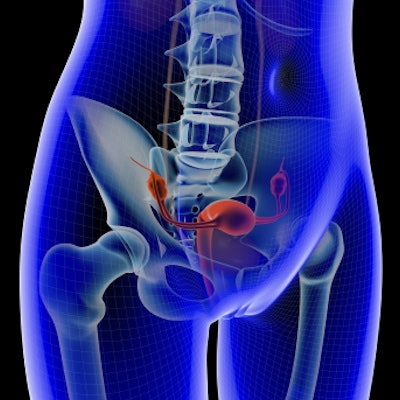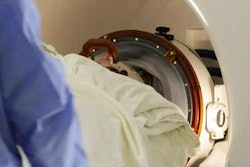
MR-guided focused ultrasound (MRgFUS) compares well with laparoscopic myomectomy for treating uterine fibroids, offering women a nonsurgical, fertility-preserving alternative for dealing with the condition, according to a study published online September 11 in the American Journal of Obstetrics and Gynecology.
The study findings are good news for women, especially because fibroids are common in those of reproductive age, with a prevalence range of 5.4% to 23.6%, wrote a group led by Dr. Aya Mohr-Sasson of Sheba Medical Center in Ramat Gan, Israel. For 20% to 50% of women, fibroids produce symptoms such as abnormal uterine bleeding, urinary urgency, pelvic pressure, bowel dysfunction, and impaired fertility. Fibroids can be treated surgically with hysteroscopy, myomectomy, or laparoscopy, but it's important for women to have treatment options that are less invasive.
"Clinical management of fibroids should be geared to alleviating the symptoms, and tailored to the needs and preferences of the woman," the team wrote. "While hysterectomy can be a definitive treatment for uterine fibroids, different approaches are used to treat symptomatic fibroids in women that seek uterine preservation."
Laparoscopic myomectomy is considered a good treatment option for symptomatic uterine fibroids for women who wish to maintain their fertility; compared with laparotomy, the procedure uses smaller incisions and results in shorter hospital stays, less postoperative pain, and quicker recovery. But it's still surgery, Mohr-Sasson and colleagues noted.
Instead, MRgFUS uses high-intensity ultrasound waves to kill fibroid cells. It requires no overnight hospital stay, allows women to return to their daily activities a day after treatment, and preserves the uterus.
"In contrast to other noninvasive options, the MRgFUS procedure provides rapid improvement of fibroid-associated symptoms without invasive surgery," the team wrote.
However, surgical treatments actually remove the fibroid, while MRgFUS does not. So Mohr-Sasson and colleagues sought to investigate whether women who underwent MRgFUS had a higher risk of recurrence of fibroid symptoms -- and therefore higher rates of further interventions -- than women who underwent laparoscopic myomectomy.
The study included 132 women with symptomatic uterine fibroids who were treated with laparoscopic myomectomy or MRgFUS between January 2012 and January 2017. The researchers used the Uterine Fibroid Symptom and Quality of Life (UFS-QOL) questionnaire to evaluate the women's symptom severity score before and after the procedures. In addition, in June 2017, the researchers conducted telephone interviews with the study participants to determine if the women had received any additional interventions since their initial treatment to mitigate fibroid-associated symptoms.
Of the total cohort, 64 women had laparoscopic surgery and 68 had MRgFUS. For the surgical group, median follow-up time was 31 months; for the MRgFUS group, median follow-up time was 36 months. Median fibroid diameter for both groups was 70 mm.
Women who underwent surgery had five additional interventions (7.8%) between the initial procedure and follow-up, and those who underwent MRgFUS had nine (13.2%), but the difference was not statistically significant (p = 0.31), according to Mohr-Sasson and colleagues. They also found comparable median UFS-QOL scores for both procedures at follow-up (17 out of a range of 1-22, with higher scores indicating higher quality of life).
"Our comparative long-term findings correlate with results of previous noncomparative, single-arm studies that reported similar recurrence rates, with no statistical differences in the QOL questionnaire grading for laparoscopic myomectomy or MRgFUS treatment," the researchers wrote.
Clinicians should keep in mind, however, that not every woman with symptomatic fibroids can undergo either procedure, they noted.
"Both treatments should be presented as possibilities to the appropriate patient based on the similarity of the good clinical long-term results presented in this study," the researchers concluded.




















